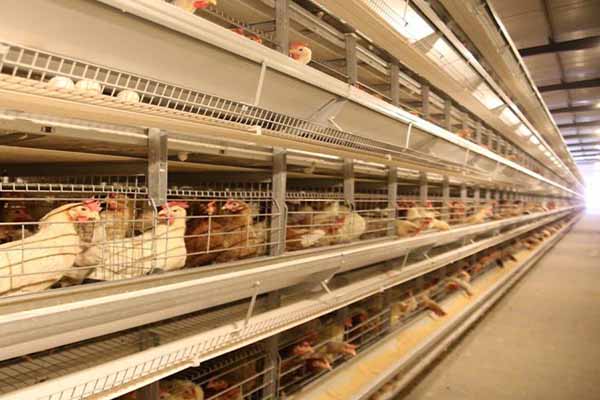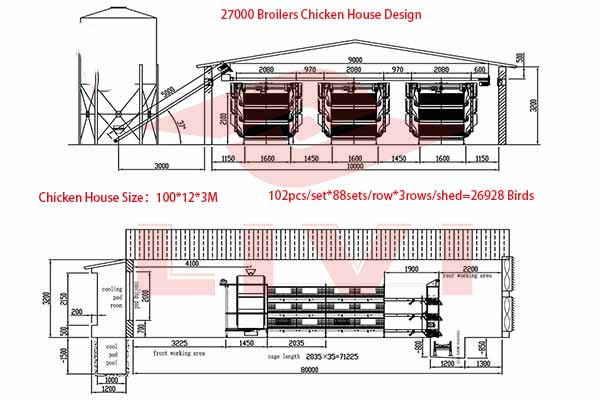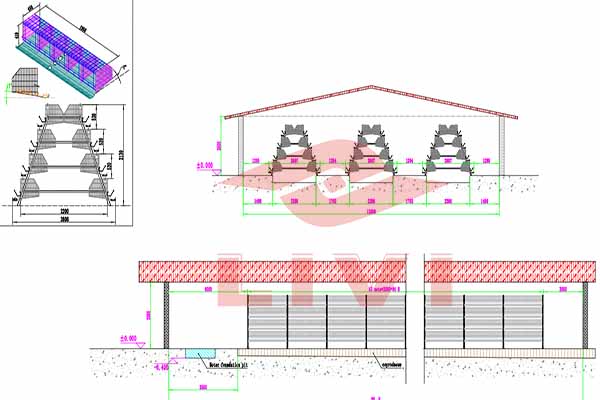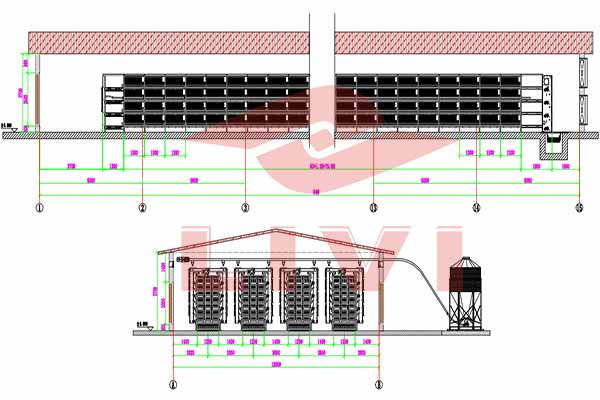Optimizing Chicken Battery Cages for 30,000 Chickens in Uganda
As the demand for poultry products in Uganda continues to grow, so does the need for efficient and scalable chicken farming solutions. One such solution is the use of chicken battery cages designed to accommodate up to 30,000 chickens. In this article, we will explore the key considerations and benefits of implementing such systems in your poultry farming venture.

Key Design Elements for Battery Cages
- Space Allocation: Ensure each cage is designed to provide ample space for chickens to move around, reducing stress and improving health. A general rule of thumb is to allocate approximately 1.5 square feet per chicken.
- Material Selection: Use durable and corrosion-resistant materials such as stainless steel or high-grade plastic for longevity and ease of cleaning.
- Ventilation: Incorporate efficient ventilation systems to maintain air quality and reduce ammonia levels, which are harmful to both chickens and humans.
- Lighting: Implement controlled lighting schedules to simulate natural daylight, promoting better growth and egg production.
For a farm housing 30,000 chickens, a layout of approximately 10,000 cages, each holding 3 chickens, would be suitable. This would require a total of 15,000 square feet of space.
Benefits of Chicken Battery Cages
| Aspect | Benefits |
|---|---|
| Space Efficiency | Maximizes land use without overcrowding |
| Health and Safety | Reduces the risk of disease spread and accidental injuries |
| Monitoring and Management | Easy to monitor the health and performance of the flock |
| Egg Quality | Improved conditions often lead to better egg quality and yield |
According to a study by th
th e National Agricultural Research Organization (NARO), the adoption of battery cages has led to a 15% increase in egg production per chicken in Uganda.
e National Agricultural Research Organization (NARO), the adoption of battery cages has led to a 15% increase in egg production per chicken in Uganda.
Considerations for Implementation
When implementing a battery cage system for 30,000 chickens, it is crucial to consider the following:
- Start-up Costs: The initial investment can be significant, including cage purchase, installation, and initial setup costs.
- Training: Staff need proper training on how to manage the cages and care for the chickens.
- Maintenance: Regular maintenance is essential to keep the system functioning efficiently and to prolong the lifespan of the equipment.
For those interested in setting up such a system, it is advisable to consult with experts in the poultry industry to ensure the best results.
Are you considering a chicken battery cage system for your farm? If so, leave a comment below or contact us at [email protected] for a free, no-obligation chicken farming design consultation and equipment quote from Livi Mechanical.




